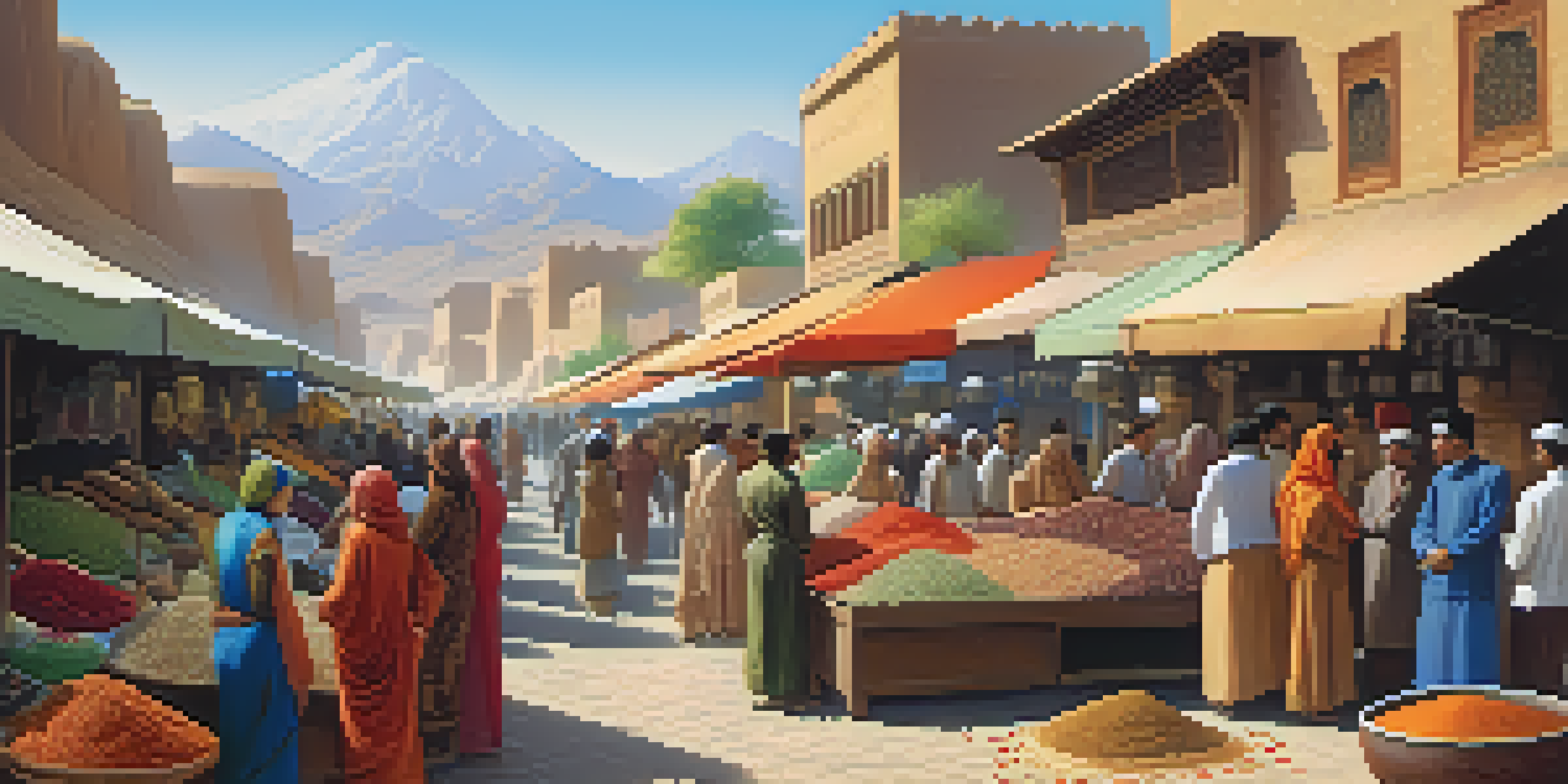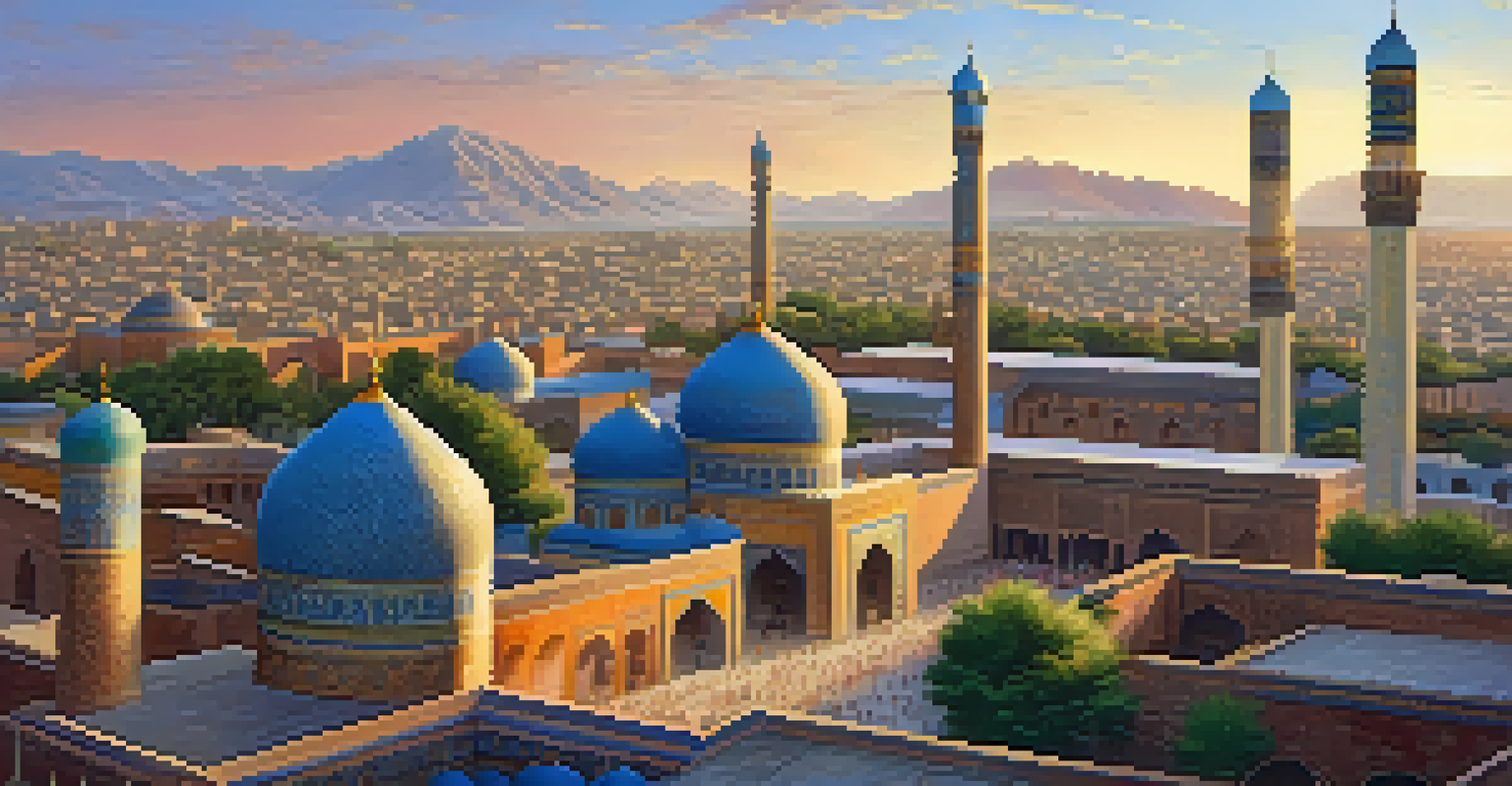The Silk Road: Journey Through the Heart of Ancient Trade

Introduction to the Silk Road and Its Importance
The Silk Road was not just one road, but a vast network of trade routes that connected the East and West. Emerging around the 2nd century BCE, it played a crucial role in the exchange of goods, culture, and ideas. Spanning thousands of miles, it linked ancient civilizations, facilitating commerce and fostering relationships between diverse cultures.
The Silk Road did not just connect trade routes; it connected cultures and ideas that shaped the course of history.
Traders transported valuable commodities like silk, spices, and precious metals, which were highly sought after. The allure of silk, in particular, was so strong that it gave the road its name. However, the Silk Road was also a corridor for the exchange of knowledge, art, and technology, shaping societies in profound ways.
Understanding the Silk Road is essential not only for appreciating ancient trade but also for recognizing its lasting impacts on globalization. It set the stage for cultural exchanges that continue to influence our world today.
Key Trade Goods Along the Silk Road
Among the many goods traded, silk was the star of the show. Originating from China, silk quickly became a luxury item in the West, symbolizing wealth and status. Its production was a closely guarded secret, making it a highly valuable commodity and a major driver of trade.

In addition to silk, spices such as cinnamon, pepper, and saffron were also traded extensively. These spices not only enhanced the flavors of food but also had medicinal properties, making them precious in both culinary and health contexts. The demand for spices was so high that they were often worth their weight in gold.
Silk Road: A Cultural and Trade Hub
The Silk Road was a vast network that facilitated the exchange of goods, culture, and ideas between the East and West.
Other notable trade items included precious stones, glassware, and even inventions like papermaking and gunpowder. The variety of goods exchanged along the Silk Road reflects the rich tapestry of cultures and innovations that flourished during this era.
Cultural Exchanges and the Silk Road
The Silk Road was as much about cultural exchange as it was about trade. As merchants traveled, they brought with them not just goods, but ideas, art, and beliefs. This exchange led to significant cultural interactions that enriched societies along the route.
Trade is not just about the exchange of goods; it is about the exchange of dreams, ideas, and human connection.
For instance, Buddhism spread from India to China via the Silk Road, transforming religious landscapes. Artistic styles and architectural techniques also traveled along these routes, influencing local art and construction. The fusion of cultures resulted in a vibrant exchange of traditions and practices.
These interactions helped to foster a sense of shared humanity across vast distances, bridging gaps between people who might never have met otherwise. The Silk Road thus became not just a pathway for goods, but a bridge for human connections.
Geography and Challenges of the Silk Road
The geography of the Silk Road was incredibly diverse, encompassing deserts, mountains, and plains. This varied landscape posed significant challenges for traders, who had to navigate through harsh conditions and treacherous terrains. The vast Taklamakan Desert and the formidable Pamir Mountains were just a couple of the obstacles that needed to be overcome.
Traveling these routes required careful planning and preparation. Merchants often traveled in caravans to ensure safety from bandits and harsh weather. The journey could take months, and traders had to be resourceful, relying on local knowledge and support.
Diverse Goods and Rich Exchanges
Silk, spices, and other valuable commodities were traded extensively, reflecting the rich cultural tapestry of the civilizations involved.
Despite these challenges, the rewards of successful trade motivated many to undertake these perilous journeys. The resilience of traders demonstrated the human spirit's ability to adapt and thrive in the face of adversity.
The Role of Cities in Silk Road Trade
Cities along the Silk Road served as vital hubs for trade and cultural exchange. Prominent cities like Samarkand and Bukhara became melting pots where merchants, travelers, and scholars converged. These urban centers facilitated the flow of goods and ideas, acting as gateways to different regions.
Markets in these cities were vibrant, filled with the sights and sounds of traders from various backgrounds. The exchange of languages, customs, and culinary delights enriched the local culture and economy. As a result, these cities thrived, becoming influential centers of commerce and learning.
Moreover, the wealth generated from trade led to advancements in architecture, education, and the arts. The Silk Road cities were not just trading posts; they were flourishing centers of civilization.
Decline of the Silk Road: Factors and Consequences
Despite its immense importance, the Silk Road began to decline around the 15th century. Several factors contributed to this decline, including the rise of maritime trade routes and the Mongol Empire's fragmentation. As sea routes became more efficient and safer, traders began to shift their focus away from overland paths.
Additionally, political instability in various regions made travel increasingly dangerous. The emergence of new trade powers also changed the dynamics of commerce, leading to a reevaluation of trade routes. This shift marked a significant turning point in global trade practices.
Legacy of Global Connectivity
The Silk Road's influence continues today, shaping modern globalization and inspiring initiatives aimed at fostering economic cooperation.
The decline of the Silk Road had far-reaching consequences, affecting economies and cultures that had once thrived on its trade. However, its legacy remains, as it laid the groundwork for future global trade networks.
Legacy of the Silk Road in Modern Times
The Silk Road's influence can still be felt today, as it established early models of international trade and cultural exchange that continue to resonate. Modern globalization echoes the interconnectedness of ancient trade routes, highlighting the importance of collaboration across borders.
Additionally, the Silk Road has sparked a renewed interest in cultural heritage and history, inspiring art, literature, and tourism. Many cities along the ancient route have embraced their heritage, promoting it as a unique aspect of their identity.

Furthermore, initiatives like the Belt and Road Initiative aim to revive the spirit of the Silk Road, fostering economic cooperation and connectivity in today's world. The legacy of the Silk Road reminds us of our shared history and the power of trade in shaping societies.